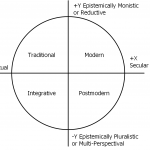My Recent Talk with Gregg Henriques about Social Science and UTOK
A few days ago, I spoke with Dr. Gregg Henriques about the “Unified Theory of Knowledge” and what efforts are in progress to close one of the two sides of the so-called “enlightenment gap”. I wrote about this in a post a few months ago. Gregg frames the enlightenment gap as having two sides: first, that the age of enlightenment and the scientific revolution never adequately defined the field of psychology and the concept of mind and second, that these movements also failed to provide adequate, coherent, reliable, and broadly encompassing social sciences.
Many people, including myself, believe that Gregg has pretty much nailed the first half of this, especially with his collaboration with other notable psychologists such as John Vervaeke. These people seem to have constructed a framework that makes sense of psychology and the mind over and above any that was previously put forth.
I like how UTOK has key ideas for showing the unity of knowledge and how he planes of existence are related to each other (matter, life, mind, culture) and how there are these 4 main branches of science corresponding to each one (physical, biological, psychological, social). Several of the key ideas expand the mind plane (7 of the 8, since one of them is the TOK overall) and include graphics and diagrams explaining the basics of how the human mind works and how the mind plane is related to the adjacent planes of life and of culture. That would be BIT and JUST respectively. I like how this integrates various psychological theories and shows how there is some truth to many of them, including behaviorism, psychoanalysis, cognitive science, and certain conceptions of phenomenology, and these are brought together into a coherent and seemingly comprehensive system.
The key ideas of UTOK are great, but I think that the culture plane of existence could have its own set of key ideas. The social sciences cover our interactions with each other and the 3rd person sociological, anthropological, political, and economic knowledge of the world in which we live. I figure that each of the other 3 planes probably deserve their own set of key ideas. For matter and for life, there are people out there who would be qualified to put together such lists.
For culture, which corresponds to the social sciences, I’ve been thinking about this quite a bit and I want to know if anyone has put together a list of potential key ideas, which perhaps somewhere down the line could be narrowed down to something like 8-10 key ideas, each with their own diagram, that would essentially explain the basics of human culture and society. UTOK has the Justifications Systems Theory, but that alone does not fully explain all of the nuances of culture, language, politics, and economics. I think we would need this to further close the second half of the enlightenment gap.
I imagine this would likely start with a list that would include different models put forth by different thinkers of recent decades. There would be some overlap and some competing ideas in there, but perhaps a qualified working group of experts could synthesize these models and produce this short list to comprehensively and coherently make sense of human culture and society. This way, we could use this as a starter course for people to understand the cultural, economic, and political systems that they are living in and that are going on all around them. And some of these people might then be able to participate in the efforts to address societal issues and work toward improvement. We want this to be intelligible and useful for community and society development and in addressing social pathologies and in society-wide therapy.
Here is the short list of culture plane “key ideas”:
- De jure vs. de facto language games, since it explains the difference between mere sociology and economics and politics (note that this connects into BIT and JUST). This connects into the notions of legitimacy, justice, and interacting with an institution or transpersonal organization. This is partially driven by the dynamics of our innate moral algorithms, known as moral foundations theory, as articulated by Jonathan Haidt in The Righteous Mind. This includes purity, harm, fairness, authority, loyalty, and liberty. Context shifts across different algorithms for morality account for irrationality and emotion hacking and power differentials.
- Sara Ness’ recently published Relating Languages hypothesis, since it explains the roles people play in conversations and the relation to behavior. Note that this is related to personality theory. https://ness-sara.medium.com/the-relating-languages-or-why-we-dont-all-just-get-along-a523576543a5
- Basic micro-economic supply and demand stuff, which connects into aspects of UTOK. This would include basic notions of rational self-interest and game theory dynamics.
- A macro-economic model showing the relationship between businesses, governments, markets, resources, and individuals. Perhaps this https://media.springernature.com/original/springer-static/image/chp%3A10.1007%2F978-3-030-26626-4_5/MediaObjects/469869_1_En_5_Fig7_HTML.png or this https://en.wikipedia.org/wiki/Macroeconomics#/media/File:Circulation_in_macroeconomics.svg. This would inform choices such as where do we expend resources and how much long term vs. short term consideration do we have. This would also include considerations for resource usage, growth, sustainability, etc. This is related to how Kate Raworth speaks of four fundamental mechanisms in the economy: the market, the state, the household, and the commons.
- Spiral dynamics, since it explains the way societies develop and the relation to individual development. This also connects to Max Weber’s sources of legitimate authority, which are traditional, rational-legal, and charismatic.
- Lene Rachel Andersen’s Bildung Rose, which includes aesthetics, production, technology, science, ethics, and narrative and how these are all connected to power. This also has connections to Tomas Bjorkman’s 3 main measures of society (fairness, efficiency, meaning). In other words, just as we can identify the primary personality traits of a person and the developmental lines, there might also be such phenomena with regard to cultures, societies, nations, and civilizations. This would also be dynamic, as it would explain how communities and nations in poverty cycles vs. middle class vs. wealthy can improve and develop or, in some cases, regress.
- Francis Fukayama’s theory of political development and political decay depending on 3 factors: a competent administrative state, a robust rule of law, and accountability that is often in the form of democracy. All of these lie in the collective imaginary. This is related to the question of what is an institution, what is a collective imaginary institution, how does it get established, how do we interact with it, and a greater explanation of how the law is implemented within bureaucracy and the political system as it depends upon people’s ingrained behavior patterns, people watching each other to make sure they follow rules, and the written records that determine what has happened and what should happen. Elected officials, bureaucrats, judges, lawyers, and voters have some influence over this, but their influence is limited because it drives off what is written across many sources and what people believe and how they interact with what they read. This is what people refer to when they talk of complex and entrenched social organizations being “the machine”.
- I couldn’t find this anywhere, but I imagine someone has already published on this: Perhaps there would also need to be something analogous to the influence matrix because societies have this tradeoff between freedom and security and whether to be more active or more passive and this can take into account the impact on the inner group and outer groups and this sort of consideration is constantly happening for political leaders in how to respond to perceived threats and how to engage in diplomacy and what to prioritize domestically. This could perhaps be related to ethnic group in-group/out-group dynamics explained in Mark Moffett’s book The Human Swarm.
- The socio-cultural dynamics explained in Malcolm Gladwell’s The Tipping Point, which explains the structural functional organization in society necessary for ideas and trends to go viral.
- Joseph Tainter’s civilizational rise and collapse lifecycle.
- Social class conflict dynamics along the lines of some neo-Marxist theories, which probably explains some things, but only to a limited extent because there are so many other dynamics at play.
I’m only listing these as candidates that might be considered for an eventual set of key ideas to make sense of the culture plane of existence. We can note that several of these existing theories would lead to competing truth claims, so they would need to be synthesized somehow. Similar to how Gregg showed how there is some truth to Freud and some truth to Skinner within the greater UTOK, I imagine there might be some truth to the theories put forth by a range of thinkers from Smith to Marx to Fukayama. Ideally, we could narrow this down to a few key ideas, each of which would have their own diagram, and we could create educational videos and animations explaining how all of these ideas come together in a comprehensive and coherent way to produce the socio-political-economic-cultural landscape that we are living in. Also, ideally this would be both understandable and inspiring to people and would help people understand the world around them so that they can work to improve it. I can say that this is how I felt with regard to my own mind after going through the UTOK courses that Gregg put together. It seems like we could do something similar for this crazy thing we call culture. If anyone knows about similar efforts underway or would like to collaborate with me on anything close to what is described here, please email me brandon@enlightenedworldview.com








